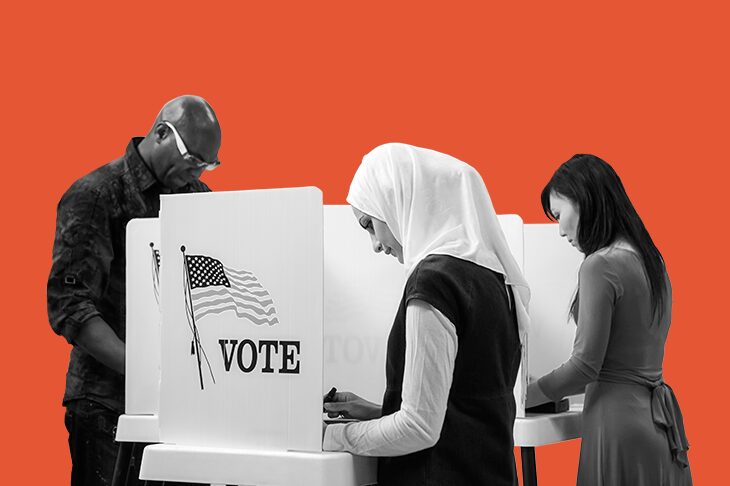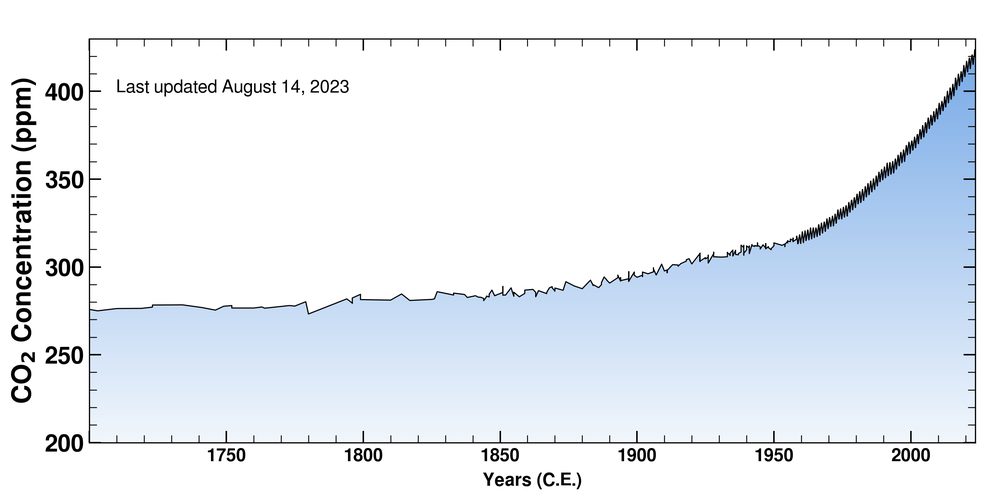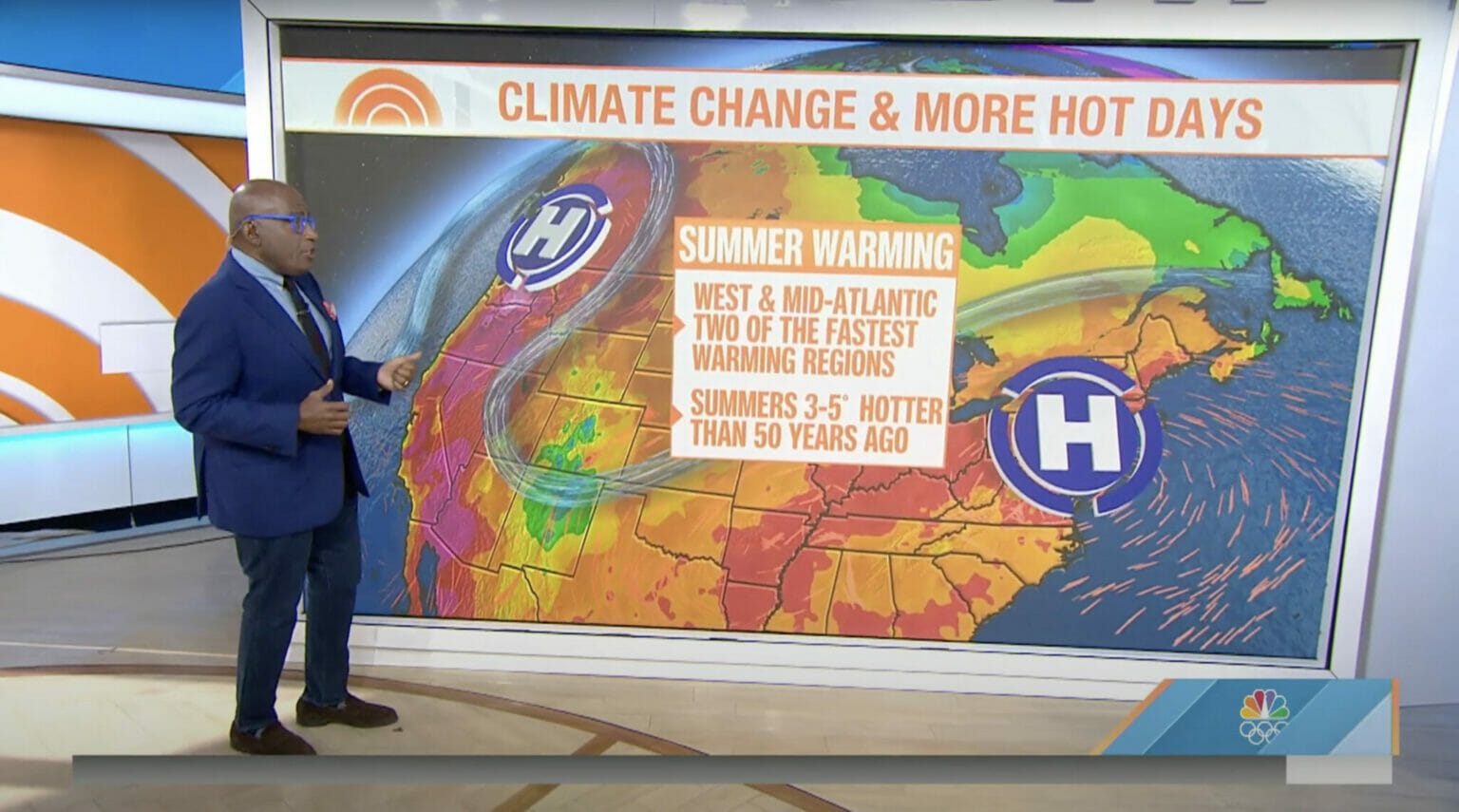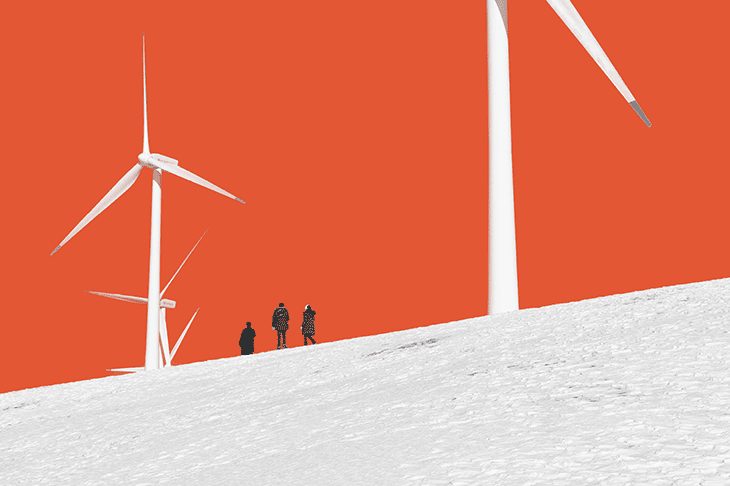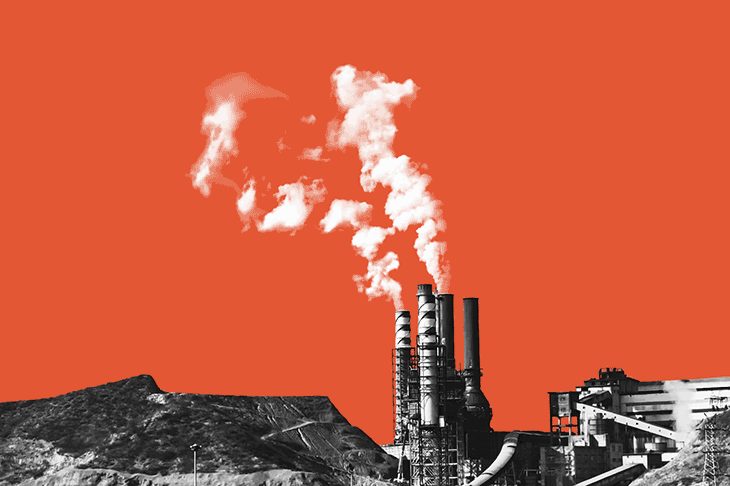Lee esto en español.
Climate is on the ballot this election year. Scientists agree that Earth is close to reaching critical tipping points as a result of global heating, and the actions we take — or don’t take — in the coming few years will have decisive consequences for humanity’s climate future. Journalists can convey this urgency by objectively reporting the facts, questioning candidates about their proposed policies, and correcting the record by dispelling misinformation.
Check out recordings and recaps from Covering Climate Now’s Climate on the Ballot Summit, held Sept. 17-19, featuring top climate and political journalists from across the industry and a special guest appearance from White House senior climate advisor John Podesta.
A Quick Climate 101
Climate change is primarily caused by burning fossil fuels, which releases carbon dioxide and other greenhouses into the atmosphere, rapidly heating the planet. Earth has already warmed 1.2 degrees Celsius, on average, beyond pre-industrial temperatures, leading to more frequent and severe weather disasters, sea-level rise, biodiversity loss, and more. The global climate science body, the UN Intergovernmental Panel on Climate Change, warns that exceeding 1.5 degrees C of warming will have exponentially more severe consequences, which will be come progressively more difficult, if not impossible, to reverse. To learn more, see CCNow’s “Climate Science 101” guide.
A Key Election Issue
Voters’ Perspectives
A majority of Americans, 64% according to a recent study by the Yale Program on Climate Change Communication (YPCCC), are at least “somewhat concerned” about climate change. Moreover, 62% of registered voters say they prefer candidates who support taking actions to fight climate change — including efforts to promote clean energy and reduce reliance on fossil fuels — according to another recent YPCCC study. (Four in 10 call candidate’s positions on climate “very important” to their vote.)
Of special note, Yale’s ‘Climate Opinion Maps’ are an essential tool for journalists, breaking down public sentiment on a range of climate questions by state, country, congressional district, and more.
This polling illustrates that the tendency to frame climate questions as simple matters of red versus blue doesn’t hold up to scrutiny. In fact, there’s a significant disconnect between the political discourse around climate change, including the positions held by political leaders, and public sentiment, as reported at length by CBS News and its affiliated local stations nationwide.
Crucially, climate denial is increasingly falling out of favor, even if some political leaders continue to voice it. Some 80% of the American public say they “want to learn more” about climate change, according to YPCCC director Anthony Leiserowitz.
It’s Accuracy, Not Activism
Given how climate change has been politicized, newsrooms and reporters sometimes worry that reporting accurately on climate change will result in audiences viewing them as partisan. Climate change, and the need to act on it, is grounded in overwhelming scientific consensus. How exactly we act on climate, though, is a fair and important matter of discussion and debate; and, as journalists, when we help to moderate that discussion we provide a vital public service. After all, beyond the basic need to rapidly reduce humanity’s reliance on fossil fuels, science does not prescribe solutions — potential solutions abound, all with unique benefits and drawbacks that deserve careful scrutiny.
Notably, to cover the climate story fully, we must also cover activists, who are newsmakers in their own right — much of recent years’ climate progress arguably would not have been made without their pressure on leaders — and whose work is as deserving of accountability as it is attention. Activists and activist groups are complex and diverse, and they don’t always agree with each other. What are these activists and groups saying? What is the substance of their demands? And how are they convincing people, or not? (For a strong example of covering activism, see this piece from NBC’s Chase Cain, in which he covers a climate protest in New York City.)
On the campaign trail
Engaging Candidates
Federal, state, and local officials are taking action, now, on legislation that promises to speed the transition to green energy, curb emissions, and bolster community resilience against climate impacts. Likewise, many officials are working counter to those goals and, indeed, to perpetuate fossil fuel use in all aspects of our lives. When interviewing candidates, whether for Congress, city council, mayor, or state legislature, don’t ask if they believe in climate change. This incorrectly suggests to audiences that the science remains up for debate. Ask what they plan to do about it.
Nor should we wait for candidates to raise the subject of climate change themselves. Armed with the facts, and given the urgent need for action — at a time, no less, when climate disasters are becoming increasingly commonplace — it’s entirely appropriate for journalists to be proactive in foregrounding climate change. If a candidate downplays the existence of climate change, ask how they plan to explain that to voters, who overwhelmingly understand that climate change is happening and are eager to hear about solutions.
Ask Candidates:
- What is your plan to reduce carbon emissions? When do you plan to get this done?
- What is your plan on clean energy?
- Do you support current government climate policies, including the Inflation Reduction Act? Why or why not?
- How will you protect people and communities from climate impacts, including the most vulnerable groups?
- How will you enhance the resilience of critical infrastructure, such as energy grids, water systems, transportation, and telecommunications networks, in the face of climate-fueled threats?
- How do you plan to address an increasingly vulnerable housing stock? What about rising insurance premiums resulting from climate change?
Call Out Misinformation
The climate conversation has long been marked by dis- and misinformation — much of which, importantly, has been propagated or funded by the oil and gas industry. Politicians, lobbying groups, social media influencers, media organizations, and more are all vectors — and if we’re not careful, if we’re not aware of the common false narratives, it’s all too easy for journalists to become one, as well.
Climate misinformers use a variety of tactics to confuse the public. This includes cherry-picking data or citing studies out of context to support their argument; presenting fringe opinions as scientific expertise; and, on the flip side, attacking prominent climate scientists to discredit their work.
These days, outright denying the existence of climate change is becoming less common (although several incredibly prominent politicians still do so). Instead, those with vested interest in fossil fuels are seeding narratives that call into question the severity of climate change and the efficacy of popular solutions, like wind and solar energy. In the wake of hurricanes Milton and Helene this fall, unfortunately, we also saw dramatic disinformation take hold, such as that the government was controlling and purposefully steering such disasters into select communities and that federal relief workers aimed to infiltrate and steal from affected communities. (One narrative suggested the federal government was seeking to seize territory to mine lithium for electric vehicles, a two-for-one narrative that both denied climate change as an actual cause of storms like this while sewing distrust in EVs as a climate solution.) Far-fetched as these narratives were, their spread demonstrated the enduring power of climate disinformation.
- Myth: Scientists don’t agree about climate change. Truth: More than 99% of climate scientists agree that human activity is overheating the planet. Climate change is not in doubt, nor is it a political hoax.
- Myth: We can’t know that human activity is the cause. Truth: Global temperature rise has closely paralleled rising CO2 levels since humans began burning large amounts of fossil fuels during the Industrial Revolution. Top scientific institutions, including NASA, have compiled these records.
- Myth: The climate has always changed like it is today. Truth: While the climate has changed over time, it has never changed so quickly. Today’s human-induced rate of carbon release is “unprecedented during the past 66 million years,” according to a 2016 Nature study.
Several common climate myths include:
- Myth: Scientists don’t agree about climate change.
Truth: More than 99% of climate scientists agree that human activity is overheating the planet. Climate change is not in doubt, nor is it a political hoax. - Myth: We can’t know that human activity is the cause.
Truth: Global temperature rise has closely paralleled rising CO2 levels since humans began burning large amounts of fossil fuels during the Industrial Revolution. Top scientific institutions, including NASA, have compiled these records. - Myth: The climate has always changed like it is today.
Truth: While the climate has changed over time, it has never changed so quickly. Today’s human-induced rate of carbon release is, in the words of Nature, “unprecedented during the past 66 million years.”
See CCNow’s guide “10 Climate Change Myths Debunked” for more common myths and how to refute them.
When politicians or other actors spread mis- or disinformation, reporters have an obligation to hold them accountable by stating the truth, debunking myths, and ensuring accuracy prevails. If needed, talk to vetted climate experts to check candidates’ plans against what science says is necessary. See CCNow’s guide “Don’t Get Duped!” for more tricks used to spread lies and tools to fight against them.
A Local Story
Many local governments and institutions have not waited for the federal governments to cut emissions and boost resilience. And some local areas are, in a way, pioneering test beds for a range of climate solutions. As such, there are plenty of local reporting angles to explore that will help inform voters. For just one example, the Inflation Reduction Act is pumping hundreds of billions of dollars into communities across the US to accelerate the clean energy transition — with traditionally Republican-leaning states reaping outsized benefits — yet most Americans don’t even know about it, or that the bill’s future is in question.
Here are some local angles to consider:
Clean energy transition. Report on local clean energy projects, including wind, solar, EV battery production, and more. Ask local residents about the clean energy switches they’re making in their lives, for example, by purchasing heat pumps or electric cars.
- The New York Times and Spectrum News talk to people adopting heat pumps in Maine.
- WUWM, in Milwaukee, Wisc., reports on local leaders implementing clean energy projectsNBC News shows how authorities in Florida, Texas, and California are installing solar panels along highways, above canals, and in unused public spaces (segment starts at 3:28).
Business and jobs. How are climate policies impacting businesses, their employees, and the wider local community?
- Philadelphia’s WHYY reports on a new green job program that trains future workers to weatherize homes and to install, maintain, and fix heat pumps.
- WWNO, in New Orleans, talks to Louisiana farmers about their climate challenges.
- CBS News talks to Georgia peach farmers suffering climate impacts.
- WRAL, in Raleigh, N.C., looks at how North Carolina has become a major clean energy investment hub.
Infrastructure. How are climate considerations factoring into the planning and construction of new and existing infrastructure, such as highways, reservoirs, and public transit lines?
- CBS affiliate WCCO, in Minneapolis, Minn., reports on how climate is impacting the walking path along Lake Superior and infrastructure development in Duluth.
- The Arizona Republic reports on how local tribal communities are using new climate funding to rehabilitate areas along the Colorado River.
- Next 9NEWS, in Denver, Colo., looks at how climate is impacting local roads and how climate informs in future infrastructure plans.
Housing. How is climate change affecting housing availability and affordability, including challenges stemming from higher-priced or canceled home insurance policies?
- NBC10, in Boston, Mass., shows how public housing is integrating carbon-free building practices.
- NBC2, in Fort Myers, Fla., reports on how climate is driving skyrocketing homeowner insurance rates.
- NPR explores how communities in Arizona, California, and New Jersey are considering building bans in areas threatened by climate.
Recreation. How is climate change affecting recreational activities and tourism?
- USA Today digs into how climate is changing the iconic cherry blossom festival in Washington, DC.
- VTDigger reports on how Vermont ski resorts are adapting to reduced snowpack.
- The Philadelphia Inquirer looks at how climate is impacting baseball players.
Reporting Resources
Climate on the Ballot. Sign up for CCNow’s new weekly elections newsletter, Climate on the Ballot. Every Monday morning, we offer up a fresh climate-related topic, with story ideas and examples of outstanding coverage, for integrating climate into local, state, and national reporting.
Climate & elections calendar. Subscribe to our climate & elections calendar featuring over 100 entries, including key election dates, climate conferences, international summits, and more.
Data & visualizations. Climate Central produces a variety of data-driven resources for local reporters:
- Visual, camera-ready resources on extreme weather, health and safety, climate solutions, and more for use by journalists in their stories.
- The Climate Shift Index, which maps the influence of climate change on daily temperatures in US communities.
- The Coastal Risk Screening Tool examines local sea-level rise and coastal flooding risks.
Definitions. The Climate Dictionary, produced by the United Nations Development Programme, defines key climate change terms and concepts.
Local climate initiatives. Climate Herald follows government actions, meeting agendas, and press releases to track local climate policy in the US. See their local climate policy database.
Misinformation. Climate Action Against Disinformation’s guide “Navigating Climate Disinformation” helps journalists identify and counter mis- and disinformation.
Polling. The Yale Program on Climate Change Communication’s Climate Opinion Maps report US public opinion on climate at the state, congressional district, and county levels.
Resource hub. CCNow’s climate hub offers resources, tips, tools, and more for journalists and newsrooms. It includes US local and regional resources for reporters to better understand climate locally, find reporting sources, and dig deeper into topics.
